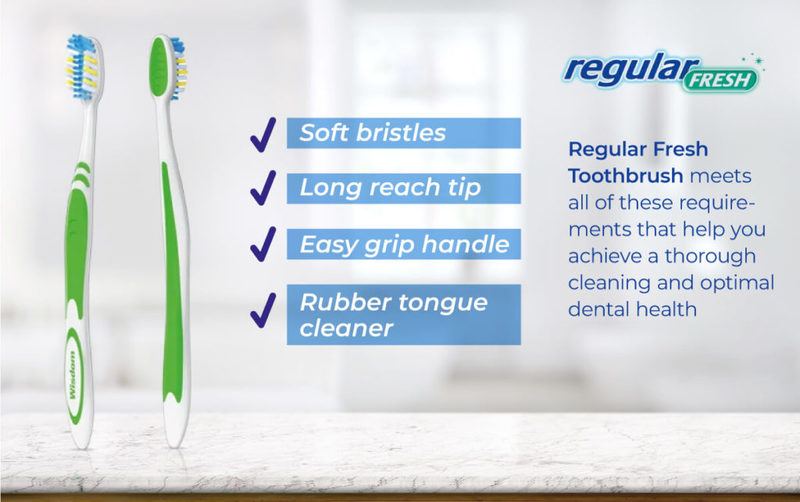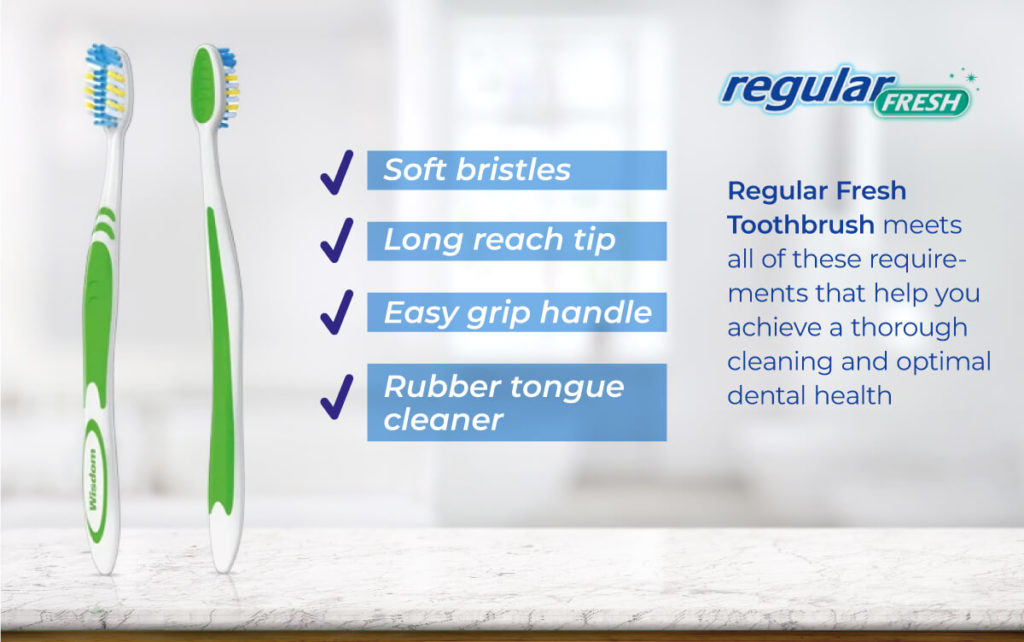
When it comes to oral hygiene, choosing the right toothbrush is crucial. After all, it’s the tool that helps keep our pearly whites sparkling clean. But with so many options available, how do you know which toothbrush is the right fit for you? Fear not, my friend! In this article, we will dive into the world of toothbrushes and uncover the secrets to selecting the perfect one for your unique needs. So, let’s brush away the confusion and learn how to choose the right toothbrush that will make your dentist proud!
First things first, let’s talk about the bristles. The bristles are the unsung heroes of the toothbrush, doing the dirty work of removing plaque and food particles from your teeth. Should you go for soft, medium, or hard bristles? Well, the answer is softer than a cloud! Dentists recommend opting for soft bristles, as they are gentle on your gums yet effective in cleaning your teeth. Hard bristles, on the other hand, can be too harsh and may even cause gum recession over time. So, when it comes to bristles, remember: soft is the way to go!
Now that we’ve tackled the bristles, let’s move on to the size and shape of the toothbrush head. Here’s a little secret: the size of the toothbrush head matters more than you might think! A smaller head allows for better maneuverability, making it easier to reach those tricky nooks and crannies in your mouth. Look for a toothbrush with a head that comfortably fits in your mouth and can access all areas of your teeth. As for the shape, you have options like rectangular, tapered, or even diamond-shaped heads. It all boils down to personal preference, so choose the shape that feels most comfortable to you. With these tips in mind, you’re well on your way to selecting the perfect toothbrush that will keep your smile shining bright like a diamond!
How to Choose the Right Toothbrush: A Step-by-Step Guide
- Consider the bristle type: Soft bristles are gentle on teeth and gums, while medium or hard bristles may cause damage.
- Check the size: The head of the toothbrush should comfortably fit in your mouth and reach all areas of your teeth.
- Look for the ADA seal: This indicates that the toothbrush has been tested and approved by the American Dental Association.
- Choose a handle type: Whether you prefer a straight or angled handle, go for one that feels comfortable and allows for easy maneuverability.
- Replace regularly: Replace your toothbrush every three to four months, or sooner if the bristles become frayed.

Choosing the Right Toothbrush
Selecting the right toothbrush is vital for oral hygiene, but it can be daunting with numerous options available. By considering key factors, you can make an informed decision benefiting your dental health.
Consider the Bristle Type
Opt for soft bristles, recommended by dentists for gentle cleaning without damaging gums or enamel. Avoid hard bristles that can cause gum recession and enamel erosion.
Choose the Shape of Bristles
Pick from flat, dome-shaped, or rippled bristles based on your preferences. Flat bristles offer a smooth brushing experience, while dome-shaped ones reach tricky areas, and rippled bristles massage gums.
The Importance of Toothbrush Head Size
Ensure the toothbrush head fits comfortably in your mouth, covering all tooth surfaces. Smaller heads suit children, while adults typically benefit from a head size of about 1 inch by 1/2 inch.
Manual or Electric Toothbrush?
Choose between manual or electric based on preference and needs. Manuals offer control and portability, while electrics provide consistent cleaning, ideal for those with limited dexterity.
Choosing the Right Bristle Movement
Select between oscillating-rotating and sonic movements for electric toothbrushes. Both are effective, but oscillating-rotating may be better at plaque reduction. Consistency and proper technique matter most, regardless of the type chosen.
In conclusion, choosing the right toothbrush is essential for maintaining good oral health. Consider the bristle type, toothbrush head size, and whether a manual or electric toothbrush is more suitable for your needs. Remember to consult with your dentist for personalized recommendations. By making an informed decision, you can ensure that your toothbrush effectively cleans your teeth and promotes a healthy smile.
Key Takeaways: How to Choose the Right Toothbrush
- Consider the size of the toothbrush head to ensure it fits comfortably in your mouth.
- Choose a toothbrush with soft bristles to avoid damaging your gums and tooth enamel.
- Look for a toothbrush with a handle that is easy to grip for better control while brushing.
- Consider the type of toothbrush bristle pattern, such as flat or angled, based on your personal preference.
- Replace your toothbrush every three to four months or sooner if the bristles become frayed or worn.
Frequently Asked Questions
What should I consider when choosing a toothbrush?
When choosing a toothbrush, there are a few factors to consider. Firstly, consider the size of the brush head. It should be small enough to reach all areas of your mouth comfortably, especially the back teeth. Secondly, consider the bristles. Soft bristles are recommended as they are gentle on your gums and tooth enamel. Lastly, consider the handle. It should be easy to grip and maneuver, allowing you to brush effectively.
Remember, everyone’s needs are different, so it’s important to choose a toothbrush that suits your specific oral health needs. If you have sensitive gums or teeth, consider a toothbrush with extra soft bristles. If you have difficulty gripping, look for a toothbrush with an ergonomic handle. Taking these factors into account will help you choose the right toothbrush for you.
Should I choose a manual or electric toothbrush?
Both manual and electric toothbrushes can be effective in maintaining good oral hygiene. It ultimately comes down to personal preference. Manual toothbrushes are affordable, easily accessible, and can be just as effective when used correctly. Electric toothbrushes, on the other hand, can provide additional benefits such as built-in timers and oscillating bristle technology that can help improve brushing technique.
If you have arthritis or struggle with manual dexterity, an electric toothbrush may be a better option for you. However, it’s important to note that the most important aspect of brushing is technique, regardless of the type of toothbrush you choose. Consult with your dentist to determine which type of toothbrush is best suited for your individual needs.
How often should I replace my toothbrush?
You should replace your toothbrush every three to four months, or sooner if the bristles become frayed or worn. Over time, the bristles lose their effectiveness in removing plaque and debris from your teeth. Additionally, old toothbrushes can harbor bacteria and become less hygienic. By replacing your toothbrush regularly, you ensure that you are maintaining optimum oral hygiene.
If you’ve recently been sick or have a weakened immune system, it’s a good idea to replace your toothbrush to minimize the risk of reinfection. Remember to inspect your toothbrush regularly and replace it as needed to ensure proper oral care.
Are there any specific toothbrushes for children?
Yes, there are toothbrushes specifically designed for children. These toothbrushes are typically smaller in size to accommodate a child’s mouth and have softer bristles to protect their developing teeth and gums. Some children’s toothbrushes also feature fun designs or characters to make brushing more enjoyable for kids.
When choosing a toothbrush for your child, consider their age and oral health needs. For infants, you can use a finger brush or a small, soft-bristled toothbrush. As they grow older, you can transition to a toothbrush with a smaller brush head and age-appropriate bristles. It’s important to supervise your child’s brushing until they develop the necessary skills to brush effectively on their own.
Can I use a toothbrush with medium or hard bristles?
It is generally recommended to use a toothbrush with soft bristles. Medium or hard bristles can be too abrasive and may cause damage to your gums and tooth enamel over time. Brushing with a toothbrush that has soft bristles is gentle yet effective in removing plaque and debris from your teeth.
If you have specific concerns or conditions that require a different type of brush, consult with your dentist for personalized recommendations. They can assess your oral health needs and advise you on the most suitable toothbrush for your individual situation.
How to Choose a Right Toothbrush
Final Thoughts
Choosing the right toothbrush is essential for maintaining good oral hygiene amidst numerous options available. Focus on the toothbrush head’s size, opting for a smaller head for easy access to all mouth areas. Soft bristles are recommended for gentle cleaning, while an ergonomic handle ensures comfortable grip and control. Investing time in selecting the right toothbrush ensures optimal dental care, promoting a healthy and radiant smile for years to come.
Call or Book appointment online
:Ace Dental Care Alpharetta office: 678-562-1555 - Book Now
Ace Dental Care Norcross office: 770-806-1255 - Book Now
Disclaimer
This blog post was generated by artificial intelligence. The content of this post may not be accurate or complete, and should not be relied upon as a substitute for professional advice. If you have any questions about the content of this post, please contact us.
We are constantly working to improve the accuracy and quality of our AI-generated content. However, there may still be errors or inaccuracies. We apologize for any inconvenience this may cause.





